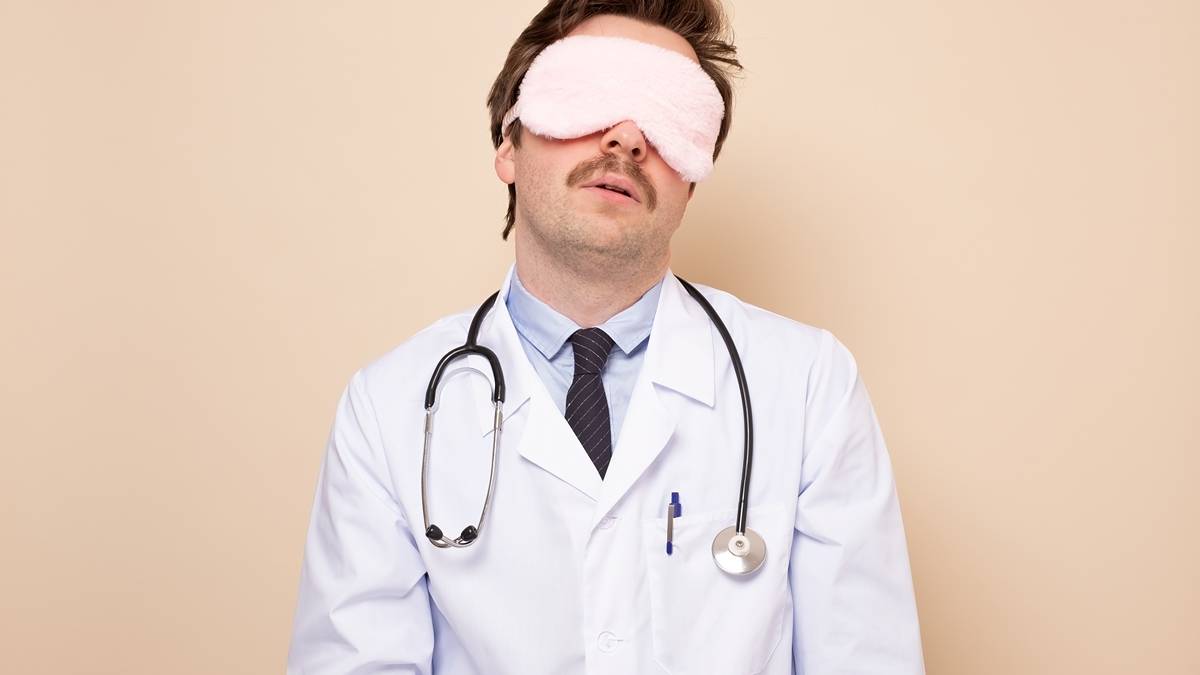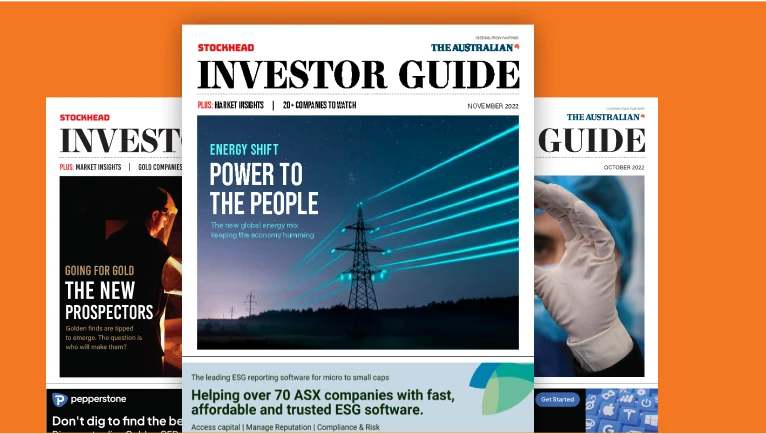Scott Power: ASX healthcare sector falls as strain of reporting season takes a toll

The volatile ASX healthcare reporting season has taken its toll on the sector. Pic via Getty Images
- The ASX healthcare sector fell 4.4% over past five days while broader market was down 0.6%
- Morgans’s Scott Power has described the latest reporting season as volatile with ‘extreme’ share price swings
- Ramsay among falling stocks as Sigma up on first full-year result since Chemist Warehouse merger
Healthcare and life sciences expert Scott Power, who has been a senior analyst with Morgans Financial for 27 years, gives his take on the ASX healthcare sector for the week.
The ASX healthcare sector’s pulse remains unsteady as a volatile reporting season continued this week, with bears and bulls locked in a tug-of-war.
Mid morning on Friday the ASX Health Care Index (ASX:XHJ) had fallen a hefty 4.4% for the past five days, while the benchmark S&P/ASX 200 (ASX:XJO) was down 0.6% for the same period.
The sector’s biggest name blood products giant CSL (ASX:CSL) continued to fall this week, down ~4% in the past five days, after recording its biggest ever daily fall of 17% on August 19, upon release of its FY25 and restructure plans.
“In the large and mid-cap space there’s been seven stocks which have performed well once they’ve released their results and six which have performed poorly,” Morgans’ senior healthcare analyst Scott Power.
“The swings have been quite extreme of 10% or more in a number of instances, which really marks it as one of the more volatile reporting seasons that we’ve had and we’re trying to work out what are some of the drivers.”
Furthermore, Power said share price movements often appear disconnected from the underlying performance of the business.
He said large passive index funds, which buy and sell stocks to track market indices, appear to amplify these swings as they adjust their holdings making it difficult for analysts.
“The passive index funds are a dominant part of the market and are creating extremes in share price movements as they move in and out of stocks and sectors,” he said.
Ramsay Health Care sinks as profit takes hit
Australia’s largest private hospital operator Ramsay Health Care (ASX:RHC) sunk 10.5% on Thursday after disappointing investors with its FY25 results.
Ramsay reported full-year revenue up 6.8% to $17.8 billion, while underlying net profit after tax from continuing operations rose just 1.7% to $305.3 million with the result affected by a previously flagged non-cash impairment of $291m for its British mental health business Elysium Healthcare.
Acquired in 2022, Ramsay said Elysium struggled with lower-than-anticipated occupancy rates and ongoing margin pressure from minimum wage and National Insurance increases.
In Australia, CEO and managing director Natalie Davis said Ramsay’s performance in its core private hospitals business showed signs of improvement, driven by activity growth and improved indexation from private health insurers.
However, the result was weighed down by lower contributions from public hospitals, specifically Joondalup in Perth, due to higher operating costs and reduced activity after Peel Health Campus also in WA returned to public management in August 2024.
“Ramsay Santé continues to be impacted by reduced government funding support for the private health system in France, with performance in the Nordics being driven by improved results in Sweden,” she said in an ASX announcement.
“We are progressing the evaluation of strategic options in relation to our 52.8% shareholding in Ramsay Sante, with advisors Goldman Sachs.”
Morgans has a hold rating on Ramsay and has reduced its 12-month target price from $37.10.to $35.22.
Sigma up on strong first result post Chemist Warehouse merger
Sigma Healthcare (ASX:SIG) jumped 7.8% on Wednesday after delivering its first full-year result since merging with Chemist Warehouse Group (CWG), reporting a significant lift in revenue with integration benefits starting to flow through.
For FY25, Sigma posted normalised EBIT of $834.5 m, slightly below consensus but ahead of Morgans forecasts. Sales surged 82% to $6 bn, with like-for-like growth in CWG of 11.3%.
During the period, Sigma opened 35 new outlets, split between 18 in Australia and 17 internationally.
Gross profit rose 4.5% to $1.45bn, with margins expanding 20bps to 24.1%. EBITDA was up 41.4% to $884.1m, while underlying NPAT climbed 40.1% to $579.1m, ahead of Morgans forecast of $535.9m and consensus of $573.3m.
Power said free cash flow was robust at $546m supported a final fully franked dividend of 1.3 cents per share, consistent with the group’s 50–70% payout policy.
Net debt of $752.2m was below the stated debt range of $1bn to $1.3bn.
With a $1.5bn debt facility, the company said it is well positioned to self-fund its growth strategy through to 2028.
The outlook for FY26 was upbeat, with double-digit like-for-like sales growth already recorded across the CWG network. Sigma also upgraded its synergy target from $60m to A$100m annually by 2028, mainly from supply chain and logistics efficiencies, although one-off implementation costs have risen to $95–100m.
Meanwhile, Chemist Warehouse founder Jack Gance has reportedly taken some money off the table, selling ~$480m of stock into the market on Thursday night through Macquarie Capital.
On offer were 155.1 million shares, equating to ~1.3% of issued capital, at $3.10 each after shares had closed at $3.09.
Gance and co-founder Mario Verrocchi had 558 million Sigma shares (4.8% of issued capital) released from escrow at close of trade on Wednesday, with investment banks UBS, Macquarie Capital and Barrenjoey reportedly tipped to manage a potential $1.7bn block trade.
The balance of their 5 billion shares, representing 38.3% of the register, remains in escrow until June 2026.
Morgans maintains buy recommendation for Sigma lifting its 12-month target price from $3.12 to $3.39.
EBOS falls on FY25 results, flags cautious FY26 growth
Major healthcare and animal care products distributor EBOS Group (ASX:EBO) is down ~20% in the past five days after reporting its FY25 results, which Power said was within the guidance range “but a little below” Morgans and consensus forecasts.
Underlying EBITDA was $585m, down 6.3% YoY but up 7.5% excluding the loss of a wholesale supply contract to Chemist Warehouse Australia (CWA) from July 1, 2024.
Revenue of $12.3bn was below Morgans forecast of $12.9bn but reflected 12% underlying growth, excluding CWA.
Underlying NPAT of $258m was down 15.1% YoY and below Morgans forecast of $265.3m, reflecting the loss of CWA earnings and higher depreciation/amortisation.
Healthcare revenue rose to $11.6 bn, supported by Community Pharmacy and TerryWhite Chemmart growth, while Animal Care revenue increased to $673m, despite a slight margin impact from its SVS acquisition.
For FY26 EBOS targets underlying EBITDA of $615–$635m, which Power said was well below consensus of $656m and Morgans outlook of $650m.
“Near-term headwinds include competitive pharmacy pricing, soft hospital capital spend and weak discretionary pet demand, but long-term industry trends remain supportive,” Power noted.
While the share price is weaker on FY26 outlook, Power said this was being partly offset by EBOS’s likely inclusion in the S&P/ASX200 at the September rebalance.
Morgans has an accumulate rating on EBOS and has reduced its 12-month price target from $39.15 to $34.82.
Nanosonics FY25 beats expectations but flags tariff hit in FY26
Infection control company Nanosonics (ASX:NAN) delivered a stronger-than-expected FY25 result, with revenue up 17% to $198.6m driven by strong consumables growth and capital sales growth.
Capital sales grew 9% YoY with upgrades up 10%. Gross profit margin was 78.2%, compares with 77.9% in FY24, which Morgans’ analyst Iain Wilkie wrote in a note to clients demonstrated “margin resilience despite tariff headwinds”.
EBITDA rose 55% to $25.9m, with NPAT increasing 59% YoY to $20.7m. The company added 2,210 new Trophon units in FY25, which Wilkie wrote “comfortably” exceeded Morgans greater than 2,000-unit pass-mark, while upgrades grew 10% to 1,660 units.
Trophon is an automated ultrasound probe cleaner that uses sonically-activated hydrogen peroxide mist. Recent US Food and Drug Administration (FDA) clearance for next-generation Trophon technology and launch of the Trophon3 and Trophon2 Plus software upgrade package is set to drive ongoing new install base and upgrade growth.
“The broader upgrade cycle is still to come,” Wilkie wrote.
R&D spend increased 6% in FY25 to support commercialisation of Coris following its FDA de novo clearance. Coris is the world’s first automated system specifically designed to clean the internal channels of flexible endoscopes. It remains on track for a phased rollout in FY27, with broader adoption in FY28.
For FY26, revenue is forecast to grow 8-12% to $215–$223m, recurring revenue A$147–$151m. However, Nanosonics said the Trump administration’s tariffs would cause a $4m gross profit hit this year, reducing the company’s gross margin to 75-77% from 78.2% in FY25.
Morgans maintains a buy rating on NAN with a 12-month target price of $5.50.
Ansell up 10% on FY25 results as moves to offset US tariffs
Leader in protective medical and industrial gloves Ansell (ASX:ANN) is up ~10% in the past five days after reporting mixed FY25 results with strong industrial margins and healthcare recovery offset by slowing earnings momentum and potential demand dampening from price increases.
Ansell reported a 33% full-year net profit surge to US$101.6m and said it had taken “decisive action” by pushing through price increases in June, which should offset US tariff impact “in full”.
Adjusted EPS of US$1.26 (~A$1.86) was up 19.5% in line with expectations and supported by acquisition gains (~30%) and cost savings (~50%), excluding US$98.2m in non-recurring items.
Revenue came in at ~US$2bn (~A$3bn), up 24% but below consensus and Morgans expectations.
A final dividend of US28 cents (~A41 cents) per share represented a payout ratio of 40%, consistent with Ansell’s dividend policy.
Morgans maintains a hold on Ansell but has updated its 12-month target price upward from $33.38 to $34.64 due to updated profit forecasts and a share buyback program.
The views, information, or opinions expressed in the interview in this article are solely those of the interviewee and do not represent the views of Stockhead.
Stockhead has not provided, endorsed or otherwise assumed responsibility for any financial product advice contained in this article.

UNLOCK INSIGHTS
Discover the untold stories of emerging ASX stocks.
Daily news and expert analysis, it's free to subscribe.
By proceeding, you confirm you understand that we handle personal information in accordance with our Privacy Policy.








